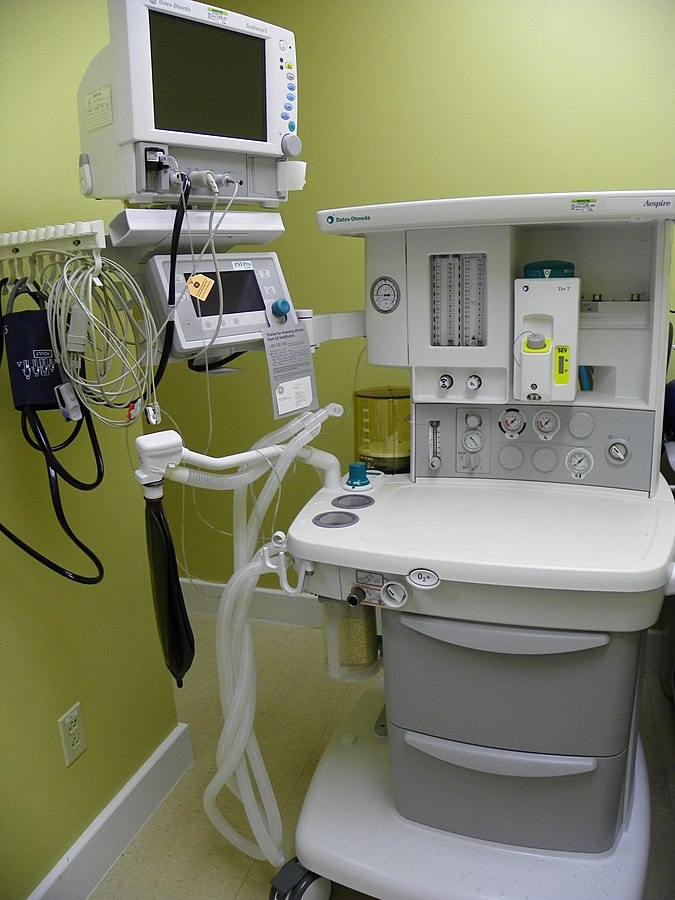Playlist
Show Playlist
Hide Playlist
Anesthetic Gases – Gases and Induction Drugs
-
04 - Gases and Induction Drugs.pdf
-
Download Lecture Overview
00:06 Hello ladies and gentlemen. Today we're going to continue our series of lectures on Anesthesia, by talking about the drugs used in anesthesiology. This slide shows a summary of the agents we're going to talk about. 00:24 These include gases, vapours, induction drugs, muscle relaxants, reversal agents, opioids, anti-emetic drugs, sedative drugs, and local anesthetic. So, a lot of material to be covered. The only gas that's used in anesthesia is nitrous oxide. And what we mean by gas, as opposed to vapour, is that it's a gas in gas form at normal room temperature, so it's normally in a gas form. And the only time it's ever in a liquid form, is when it's under very high pressure. Nitrous oxide is a weak anesthetic and it must always be supplemented with other anesthetic drugs, except in those very rare situations, where patients are in a dive chamber, and having anesthetic in a dive chamber where the atmospheric pressure can be increased, and then nitrous oxide becomes a reasonable anesthetic. 01:24 Nitrous oxide is very insoluble in fat, which means that it has a rapid onset, and a rapid offset of effect. It's an excellent analgesic without having narcotic like properties. It's often used in labour analgesia, and in the emergency room for minor procedures, but it's disappearing as a mainstream anesthetic agent in modern practice, partly because it causes gas to form in the gut and other areas of the body where there's gas spaces, and this can lead to problems with healing, and in the case of the gut, can lead to a leak of an anastomosis. 02:12 The low fat solubility causes the gas to diffuse into these gas spaces in the body, such as the middle ear and the gut. And this is an issue that is of concern. So, we're not using it as much as we used to. More commonly, we use vapours. And vapours
About the Lecture
The lecture Anesthetic Gases – Gases and Induction Drugs by Brian Warriner, MD, FRCPC is from the course Anesthesiology: Introduction.
Included Quiz Questions
Which of the following statements about nitrous oxide is TRUE?
- It is a gas that is a weak anesthetic.
- It is the original sedative vapor used in anesthesia.
- It can produce satisfactory anesthesia for major surgery on its own.
- It is useful as an inhalational induction drug.
- It has no analgesic properties
Which of the following properties does nitrous oxide have?
- Rapid action onset
- Delayed action offset
- High fat solubility
- Strong anesthetic effect
- No analgesic effect
Which of the following reasons explains why nitrous oxide is no longer used as the mainstream anesthetic?
- Its accumulation in body gas spaces, resulting in healing problems
- Its inadequate anesthetic action when used for major procedures
- The need for supplementation with other anesthetic agents
- Its rapid action offset
- The absence of any narcotic effect
Customer reviews
5,0 of 5 stars
| 5 Stars |
|
2 |
| 4 Stars |
|
0 |
| 3 Stars |
|
0 |
| 2 Stars |
|
0 |
| 1 Star |
|
0 |
This lecture was informative and engaging. The speaker did an excellent job of presenting the material in a clear and concise manner, making it easy to understand.
this esteemed teacher is too good, awesome, simle and humble




